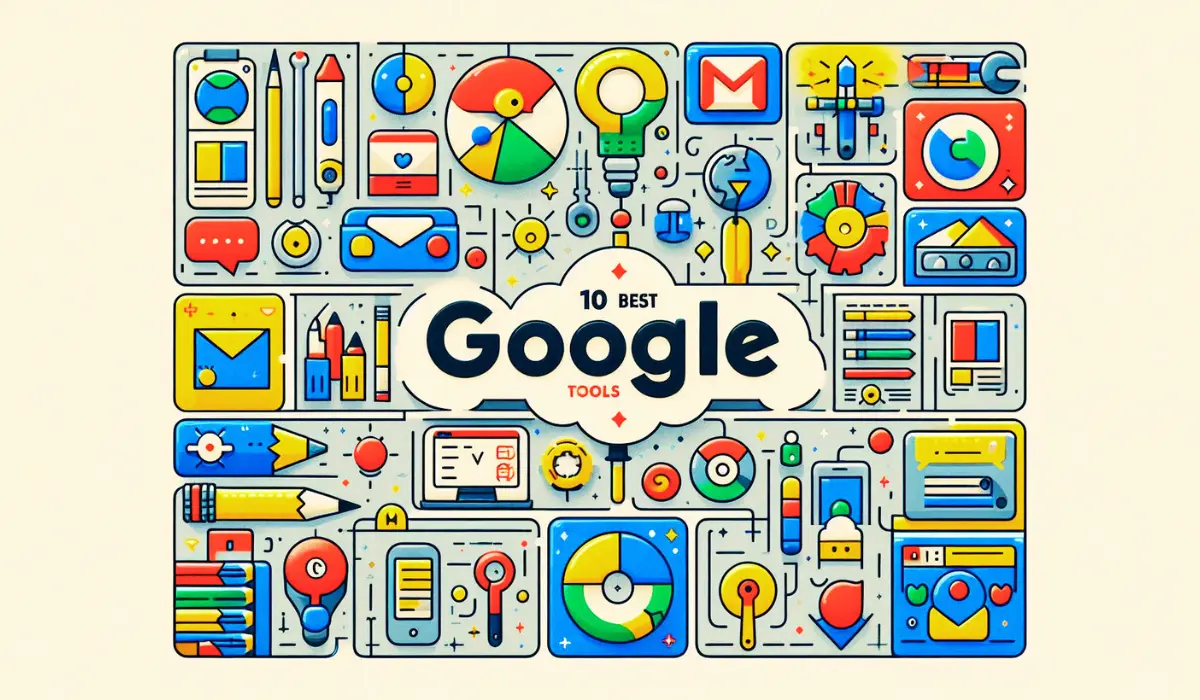Google is one of the biggest and most reputed companies in the entire world. Since its establishment in 1998, Google has maintained its dominance in almost every aspect of the digital world that we utilize right now.
In the sections below we will look at some of the most useful tools that Google has launched over the years and how they function.
1. Google Alerts

Google Alerts lets you monitor the usage of a specific word or a topic and alerts you whenever someone mentions it online.
The Google Alerts tool can be also highly useful in the corporate sector to monitor whenever someone on the internet mentions your company’s name or a specific product of your company that you would like to keep updated about.
Google Alerts works by sending you Alerts through an email or by forwarding the message to your RSS reader.
The Google Alerts feature is free to use and anyone can go to its page choose a particular topic and be alerted about it.
Here are a few of the things that you can use Google Alerts for:
- Brand Monitoring: It helps to monitor your brand name and take fast action whenever a negative comment or complaint arises about your brand or product
- Backlink Building: Whenever your product or business is mentioned in a website or a forum you can identify the website and request them to direct a link in their platform to route more traffic into your website.
- Product mentions: Alerts let you know about the reception of a particular product whenever it is mentioned online.
- Competitor Tracking: Google Alerts informs businesses about the actions of their rivals and the audience’s perception of their products and services in comparison to yours.
- Uncovering Trends: The Google Alerts algorithm helps a person find out more about the current trending and most searched topics in order to follow up with what’s currently on demand.
2. Google Ads

Google Ads (Previously known as Google AdWords) is the first tool that Google released after its search engine. Google ads give you the ability to reach a potential customer base amounting to over 5.35 billion users through its Advertisement mechanism.
Google Ads help you attract new consumers to your business or service by specifically targeting your consumer base through its integration into Google search results, YouTube, and its other networks.
Google Ads gives its users data that’s relevant to their product or service including the response from each kind of user including the major demographics and interest shown by the different groups to their Ads.
Google Ads are also one of the most straightforward methods to make money when you are a developer or someone who relies on promotional ad revenue for your products or services.
3. Google Assistant

Google Assistant is one of the most versatile and handy tools that Google has released up until now. Google Assistant helps to open up the service of a wide range of apps and services by integrating it all into its features.
It can help you search for a question, play music, find movie tickets, and even help you with home automation through the smart gadgets connected to your home network.
Google Assistant can engage in two-way conversations and can work alongside the Google Nest speaker. The Google Assistant feature was initially introduced exclusively in Google Pixel smartphones before they started diversifying into other devices.
In order to confirm a user’s identification before providing services, Google Assistant recognizes their natural speaking voice.
Looking at the reach of Google Assistant it is available across more than 90 countries and in over 30 languages.
4. Google Authenticator

Google Authenticator is a useful software when it comes to protecting your data and privacy. Google Authenticator helps to add an extra layer of security to your online profiles by prompting for a One-time password to complete your login.
These one-time passwords help the user to keep a 2-factor authentication enabled on their accounts thus helping to secure the data in your account as well as in your device.
It is also important to note that the one-time password generated by the Google Authenticator will have validity for only 30 seconds, which makes it even harder for anyone to log in to the account even if they have access to your devices.
5. Google Calendar

Google Calendar is one of the most underappreciated among all the tools that Google offers. Many underutilize or underestimate the role that Google Calendar can play in their day-to-day lives.
While many see Google Calendar as just a tool to look up upcoming events or mark important dates it is not the only functionality of the Google Calendar.
The Calendar portal is designed to be capable of integrating the time schedules of multiple users in the same place so that it makes conversations and decision-making easier and more organized.
A few other features of the Calendar are that it can let you search for events in the past, organize meetings in the future, and even give you insights into the work you have completed on a particular day.
These aspects of Google Calendar make it one of the most useful tools launched by Google and one of the most practically applicable services offered by Google.
6. Google Chrome Remote Desktop

Originally launched as a Chrome extension Google Chrome Remote Desktop Currently, the Chrome Remote Desktop feature can be accessed through its web portal.
The Google Chrome Remote Desktop was launched in succession to Google’s own tab-sharing service which lets another person take temporary control over your device to make changes from a remote desktop.
Google Chrome Remote Desktop is however different from this with the fact that the overall purpose of the tool is to establish a more permanent connection between multiple devices owned by the same user.
This means that the connections made through Google Chrome Remote Desktop tools don’t have to be re-established and can be utilized by the owner to connect to his device from a distant location and to start his work on his secondary device.
Also, Read: Top 15 Best Search Engines
7. Google Drive

On April 24, 2012, Google introduced Google Drive, a file-hosting and syncing service. Google Drive allows its users to upload their files into the cloud and later sync up their devices and access them from anywhere.
Google Drive offers up to 15 GB of storage for free to every user and offers premium plans which can kick up this figure to 100 GB and even 2 TB at the higher end.
Google Drive is a service that encapsulates other Google Services like Google Docs, Google Sheets,s and Google Slides as part of its Google Docs Editors Office suite.
The platform can be used to upload almost every format of file from pretty much any device that can be connected to the internet including Laptops, mobiles, tablets, and so on.
Apart from this Google Drive also offers other features such as the following:
- Automatic Backup and file syncing
- Shortcut options to access network files on the desktop
- Collaborative tools
- Full-Text Search
- Offline Access
- Encryption services
- Content Publishing features
- SSL security
These are a few of the other features Google Drive offers to its users.
8. Google Forms

Google Forms lets you create a personally curated form that can be used to conduct surveys, take complaints, or even voice suggestions or opinions.
Google Forms are free to use and can let anyone gather information from their friend group, family members, or even colleagues about an event, topic, or anything else.
The host of the Forms will then receive all the data after the participants submit their forms.
Google Forms will allow you to get a summary of the response through pie charts diagrams or even through arranged number groups.
9. Google Gmail

Gmail is widely used in both a personal as well as a professional setting.
It is Google’s official platform to help users send and receive electronic mail.
The Gmail service was launched on 1 April 2004 and has been the go-to mailing app for billions of users.
Gmail provides a space to store and organize emails with much greater efficiency along with the ability to attach documents or even undo their sent emails for a limited period.
Apart from these Google Gmail also offers other features such as Email Snoozing, Nudge notifications for unopened messages, password-protected emails, and self-destructing emails which could all be utilized to enhance your mailing experience.
10. Google Maps

Google Maps is one of the most revolutionary and wide-reaching projects of Google. It covers large areas that stretch across almost every continent (Excluding Antarctica) on Earth.
Google Maps was launched on 8 February 2005 and is widely used by close to 1 billion people every month. The tool has a lot more extensive real-life applications when compared to other apps.
Google Maps helps you to find a place or a destination that you would like to explore and presents it to you in the form of a pictorial map, or geographical image, or it could even point you towards a general direction to follow to reach there.
Also Read: Top 15 Best Travel Websites
Final Thoughts
After looking at all these wide varieties of tools that offer even wider varieties of services it would be a shame if we did not utilize it properly to fulfill our needs.
Everyone who lives in this digital age must try to inculcate at least a few of these tools to make improvements in their digital presence and increase their efficiency while doing any task.
